
By Fredric Dannen
Note: This is the first of two articles about American playwright and Nobel laureate Eugene O’Neill, and his great autobiographical play Long Day’s Journey Into Night, which is being presented in Spanish, with English supertitles, at the San Miguel Playhouse between August 17 and August 27.
You’re the nimble tread
Of the feet of Fred Astaire,
You’re an O'Neill drama,
You’re Whistler's mama!
You’re camembert.
– Cole Porter, “You’re The Top” (1934)
For Broadway theatergoers in the 1920s and 1930s, there were few things more thrilling than an O’Neill drama. Starting in 1920 with the publication of his plays Beyond the Horizon and The Emperor Jones, O’Neill showed the sophisticates that America had finally produced a playwright on par with Ibsen and Strindberg, two of his models. The Irish immigrant’s son, born in a Manhattan hotel, took inspiration from those Scandinavian giants because up until that time there were simply no American dramatists worth emulating. “Before Eugene O’Neill,” said Gore Vidal, “there was a wasteland. Two centuries of junk.” A typical example of American theatrical junk was the immensely popular stage adaptation of Dumas’ The Count of Monte Cristo, the title role of which was enacted more than six thousand times by O’Neill’s thespian father James.
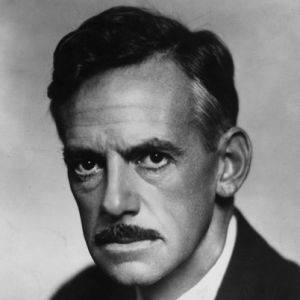
O’Neill called himself a “tragic optimist,” and his plays brought mature themes to the American stage. Anna Christie, the story of a prostitute trying to shake off her past, garnered him a Pulitzer Prize in 1922. Desire Under the Elms (1924), based on a Greek tragedy by Euripides, depicts a love triangle between a father, son, and stepmother on a New England farm. O’Neill’s 1928 Broadway hit Strange Interlude, an experimental five-hour work that was presented with a dinner break, concerned insanity, infidelity, and abortion. For these and other plays, O’Neill won the Nobel Prize for Literature in 1936, to this day the only American dramatist to be so awarded.
Even as O’Neill was making his Nobel acceptance speech in Stockholm, however, his work was falling out of favor with the public. He would live until 1953, but was forced to stop writing in the final decade of his life because of a severe tremor in his hands, caused by the neurologic disease that would hasten his early death. By the 1940s, the O’Neill drama was decidedly out of vogue. Remarkably, it was during this period, when both his health and popularity were declining, and after winning the Nobel Prize, that O’Neill wrote what are now considered his four greatest full-length plays: The Iceman Cometh, A Touch of the Poet, A Moon for the Misbegotten, and his supreme achievement, the autobiographical Long Day’s Journey Into Night. For all four of these late plays, O’Neill eschewed the expressionism of many of his earlier works in favor of realism. Only one was produced in O’Neill’s lifetime – The Iceman Cometh, in 1946 – and it met with a cool reception.
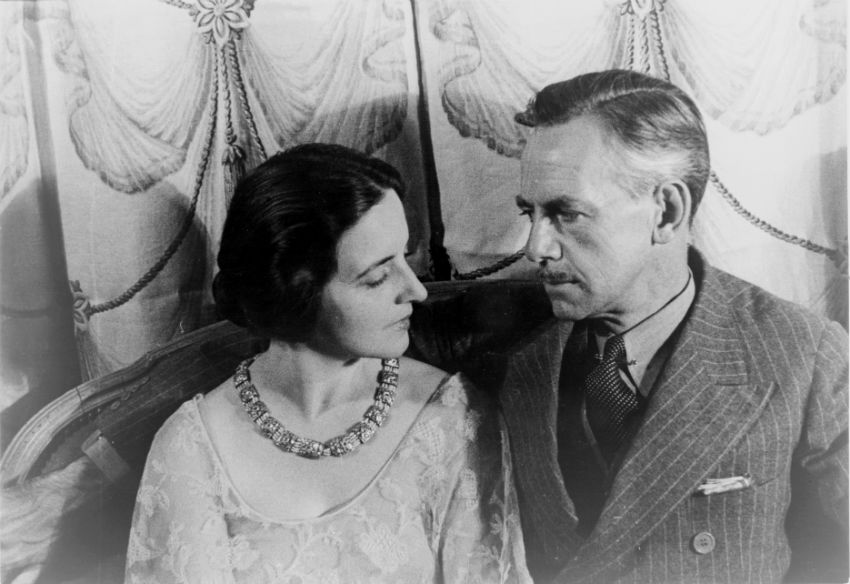
O’Neill never intended for Long Day’s Journey Into Night to be produced at all – it was far too personal, and painful – and left clear instructions to that effect. (The betrayal of those wishes by his widow, Carlotta Monterey, will be explored in part two of this article.) As O’Neill was completing the first draft in 1941, his widow later recalled, he “would come out of his study at the end of the day gaunt and sometimes weeping.” At the height of his powers as a dramatist, O’Neill reached back to the summer of 1912, and brought back to life his father, mother, and elder brother, all of whom had since died, and himself as a still-unknown 23-year-old. The play, “written in tears and blood,” as O’Neill put it, spares no one, including its author, yet ends in catharsis, with “deep pity and understanding and forgiveness.”
When he died in 1953, O’Neill had no idea of the great revival that awaited his work, and that his four final masterpieces, in particular Long Day’s Journey, would seal his reputation. Two of America’s finest dramatists, Tony Kushner (Angels in America) and the late Sam Shepard (Buried Child, True West), have pronounced Long Day’s Journey the best American play of all time.
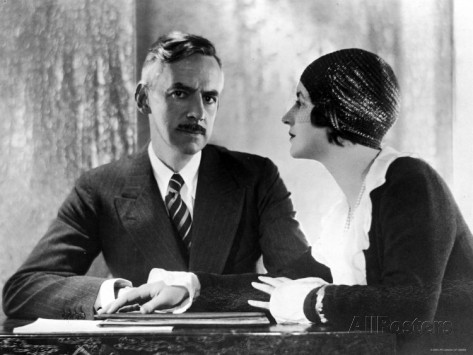
In schools of writing, students are admonished to write about what they know. Eugene O’Neill learned this lesson early. In the 1910s, O’Neill was a fixture of the Greenwich Village literary scene. Among his acquaintances were the husband and wife team of George Cook and Susan Glaspell, who went on to found the Provincetown Players theater company, and the journalist and socialist agitator John Reed, author of Ten Days That Shook the World. In 1914, eager to demonstrate his skills as a playwright, O’Neill arranged for his Greenwich Village friends to hear a reading of his short play The Movie Man, based on a real-life incident – the filming, by a Hollywood studio executive, of Pancho Villa and his army fighting Federal forces during Mexican Revolution. John Reed had just returned from Mexico, where he had fought alongside Villa, and he knew the terrain. O’Neill had no clue what he was writing about, and his play was met with scorn. Bloodied but unbowed, O’Neill soon had another of his early plays read to those same friends, a seagoing adventure called Bound East for Cardiff. After being expelled from Princeton, the playwright had worked for several years as a merchant seaman. This time around, his listeners were mesmerized, and O’Neill’s career as a dramatist was launched.
O’Neill knew nothing so well as his own early adulthood at Monte Cristo Cottage in New London, Connecticut, a harbor-side house named for the play his father had enacted so many times. In 1912, the year in which Long Day’s Journey Into Night takes place – over the course of a single summer day, from 8 in the morning until midnight – O’Neill learned he had tuberculosis and needed to be sent to a sanatorium. In the meantime, he had to cope with his mother’s morphine addiction, the result of a prescription by a cheap quack doctor when she was pregnant with him; with his elder brother’s alcoholism, which would eventually kill him; and with his father’s irrational miserliness, which had caused him to sacrifice a promising career as a leading Shakespearean actor in favor of endless performances of the frivolous but lucrative Monte Cristo. These true elements are the stuff of Long Day’s Journey, and by waiting until he was a mature playwright to dramatize his own self-dramatizing family, O’Neill created the greatest of his plays. Unlike many of his earlier dramas, Long Day’s Journey contains little physical violence, but the psychological bloodletting is real and intense. In writing so uncompromisingly about one family, O’Neill created a play about all families.
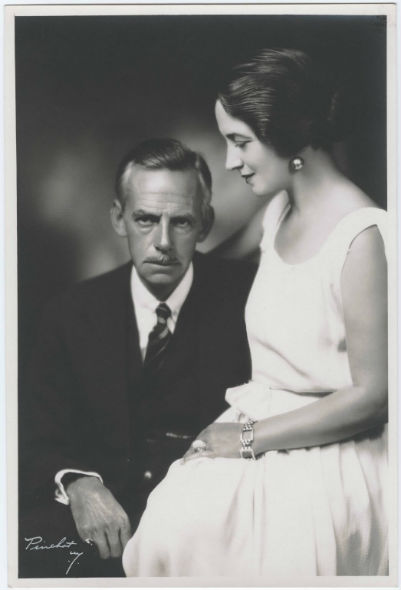
When, in 1956, three years after O’Neill’s death, his widow Carlotta Monterey decided to have Long Day’s Journey Into Night produced on Broadway, she knew she was going to entrust the play to a young director named José Quintero. Early that year, Quintero had staged an Off-Broadway revival of the previously unsuccessful Iceman Cometh, starring a young actor named Jason Robards. The revival was a smash. For the Broadway premiere of Long Day’s Journey, Quintero cast Robards as Jamie Tyrone, the elder brother; Bradford Dillman as Edmund Tyrone (the character representing O’Neill himself); Fredric March as James Tyrone, the father; and Florence Eldridge as Mary Tyrone, the mother.
When the curtain fell on the opening night performance on November 7, 1956, the stunned audience was silent for nearly a minute, and then rushed the stage for a half-hour ovation. The critics were rapturous. “A stunning theatrical experience,” wrote Walter Kerr in New York Herald Tribune. The O’Neill renaissance, which dates from 1956, continues to this day.
*****
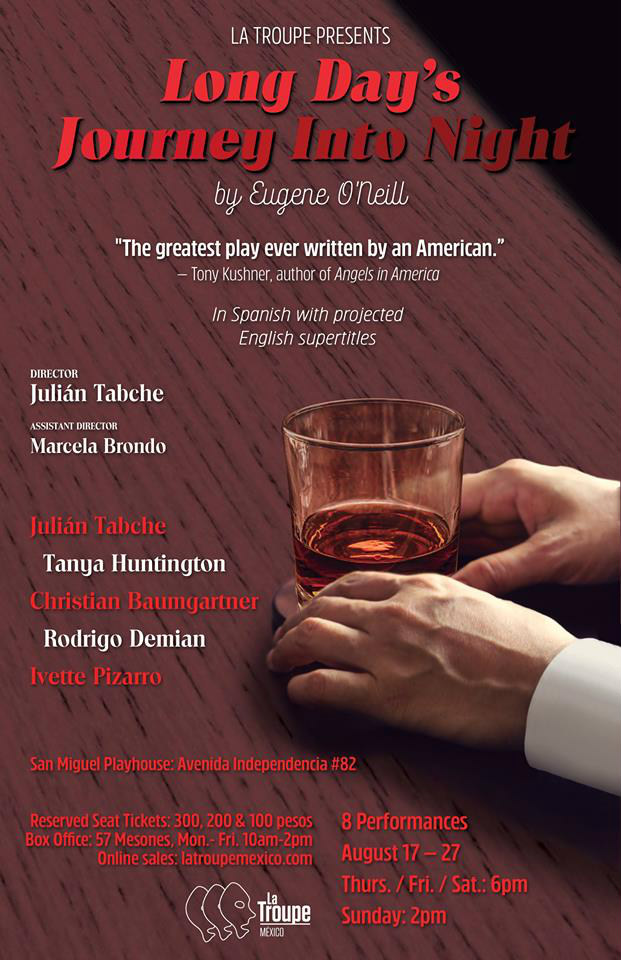
Long Day’s Journey Into Night can be seen in a full production, with period sets and costumes, and professional actors, at the San Miguel Playhouse, for eight performances between August 17 and 27, Thursday through Saturday at 6pm, and Sunday at 2pm. This is the debut production of La Troupe, San Miguel’s first bilingual theater company. The play will be presented in Spanish, as Largo Viaje Hacia La Noche, but projected English supertitles will make the play fully accessible to all native English-speakers in San Miguel.
Tickets for seats with clear supertitle visibility are 300 and 200 pesos. For seats with limited supertitle visibility, tickets are 100 pesos. The box office, open Monday through Friday from 10am to 2pm, is at 57 Mesones, corner of Relox. Tickets can also be purchased on line by visiting La Troupe’s website, www.latroupemexico.com.
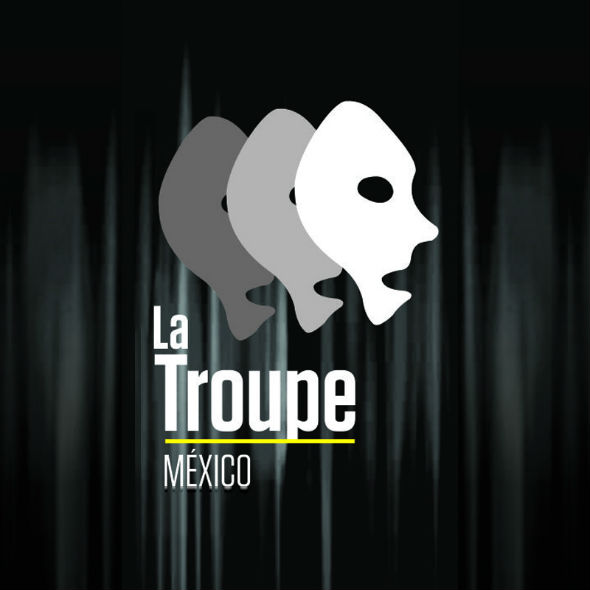
**************

Fredric Dannen is a journalist and author with a specialty in criminal justice. He has been a staff writer for the New Yorker and Vanity Fair.
In 1990, Hit Men, his book about the American music industry and the influence of organized crime, spent a month on the New York Times bestseller list. The book is #2 on Billboard's list of 100 Greatest Music Books of All Time. One of his Vanity Fair articles prompted the Sixth Circuit Court of Appeals to rebuke the U.S. Justice Dept. for fraudulently withholding exculpatory evidence in the case of Cleveland auto worker John Demjanjuk, who was extradited, wrongly convicted, and sentenced to hang in Israel as the Nazi war-criminal “Ivan the Terrible.” He secured the only interview given by Los Angeles police chief Daryl Gates on the heels of the infamous Rodney King beating, and the only interview ever given by crime boss Lorenzo Nichols, the crack kingpin of New York City.
While conducting research for a forthcoming book, Dannen uncovered lost evidence in the case of Calvin Washington, a Texan wrongly convicted of homicide. As the direct result of Dannen’s efforts, Calvin Washington won a full pardon for innocence, the first ever granted by Texas governor Rick Perry under the state’s DNA statute.
|